 When it comes to new wearable technology products, Google Glass often seems to be in the spotlight these days for its capabilities as a “wearable computer with an optical head-mounted display.” Its many unique features—from searching the web to taking pictures—can be accomplished by way of voice commands and have quickly proven to be of great benefit to many people with disabilities.
When it comes to new wearable technology products, Google Glass often seems to be in the spotlight these days for its capabilities as a “wearable computer with an optical head-mounted display.” Its many unique features—from searching the web to taking pictures—can be accomplished by way of voice commands and have quickly proven to be of great benefit to many people with disabilities.
“Wearable technology is truly a new frontier for people with disabilities,” says Dana Marlowe, a Principal Partner at Accessibility Partners, LLC. “Google Glass might be the most outwardly facing now, but there are certainly other options.”
In an effort to highlight some of those other forms of helpful wearable technology, this article takes a look at a few of the latest items to hit the market—some of which you just might want to add to your holiday wish list:
1) Pebble Smartwatch
The Pebble smartwatch has numerous features, but it is well liked by people with disabilities because it is compatible with the iPhone and because it has amotion-sensing accelerometer.
Aaron Endré, whose brother relies on hearing aids due to significant hearing loss, said the Pebble smartwatch has proven to be quite useful. “Last year, my brother got a Pebble smartwatch and because it has vibration and an alarm clock built in, he was able to ditch the vibration pad (he used to wake him) and can rely solely on the vibrating watch to wake him up without disturbing his fiance. Perhaps it is an unintended use case on behalf of Pebble, but it is quite a useful one for my brother!”
2) MeCam
According to Drew Martin, founder and CEO of MeCam, this tiny device is a wearable hands-free video camera. MeCam can be pinned to your shirt, worn as a necklace, or attached to virtually anything to make it easier for users to record video. The device is also lightweight and can record video in low-light/dark conditions.
Glenn Graham, who suffers from nerve damage in his arms and COPD, has found the MeCam easy to use in spite of his condition. “I’d seen an ad for using it on South Beach at the Clubs, and I figured why should the kids have all the fun. Once I got a hold of one, I found the ease of operation outstanding,” Graham says, adding, “What I do like a lot, is the audio pick-up. It’s clear as a bell.”
For more information, visit: http://www.MeCam.me
3) VivoText
Founded in 2008, VivoText is a text-to-speech program that can clone someone’s voice. The program is unique in that it can portray emotion, whereas other programs have not yet done this.
When it comes to “wearable tech that uses speech for the blind, I’d like to throw our human-quality text-to-speech (program) into the ring when discussing the realism of these devices. In this case, if the voice sounds human, (it is more) tolerable at length,” says Ben Feibleman, vice president of Strategy and Business Development at VivoText in New York City.
To learn more or watch a demonstration, visit www.vivotext.com.
4) OrCam
According to the company website, OrCam “harnesses the power of Artificial Vision to compensate for lost visual abilities.” Simply put, OrCam is a wearable eyeglass camera with a sensor that someone who is blind or visually impaired can utilize to determine what they are looking at or to read text.
Basically, “Orcam is a smart camera that can describe what it sees. It can assist visually disabled people to read, get around, and perform daily tasks more easily. It has a very intuitive user interface; simply point it at what you are interested in, and the device will tell you more about it. For example, you can point at a wine bottle, and the device will read the label,” explains Yonatan Wexler, vice president of Research & Development for OrCam.
To learn more, visit www.orcam.com.
5) Eye Writer
The Eye Writer is a unique device that allows users to “draw” based on how they move their eyes. Mick Ebeling, founder of Not Impossible Labs, and his team made the Eye Writer out of a PS3 camera, a few LEDs, a pair of sunglasses, and laser-tag software developed by Graffiti Research Lab. The device was originally designed for a street artist named Tempt, who tested it from his hospital bed. Based on the motion of his eyes, he was able to create a large-scale picture that was projected on the side of a nearby building. For details, visit www.notimpossiblelabs.com.
6) Medical Alert Systems
Although medical alert systems have been around for a while, some companies have made innovative changes to the overall system in ways that benefit people with disabilities. Here are just a few examples:
Medical Guardian
According to Medical Guardian, they offer an In-Home Emergency Alert Systemfor people to use in case of medical emergencies, intrusions, fires, and accidents. The landline base unit is simply a small speaker box that plugs into a phone jack and an electrical outlet. It works in conjunction with a waterproof necklace or wristband. The unit can access help up to 400 feet away when pressed. There are no contracts or activation fees.
By using this system, people with disabilities “wouldn’t have to worry about getting to their phones to call the police, as we handle all of that for them,” says Hilary Young, communications manager at Medical Guardian. “People with mobility issues don’t have the speed and agility often required to protect themselves in these kinds of emergency situations, and we want them to know that we’re here to help them.”
At present, a significant portion of the company’s clientele have mobility issues, and they’ve received some positive feedback on the product, Young says. In fact, “we received a letter from a customer recently telling us that our product actually saved her life when the sleeve of her sweater got caught in the joystick of her electric wheelchair, thrusting her forward and pinning her arm between two tables. She pressed the button pendant around her neck and within 45 minutes, EMTs arrived to help her. They told her that her arm was lodged so tightly between the tables that it was cutting off her blood supply and if she hadn’t had our device around her neck, she could have lost her arm.”
To view these products and others, visit http://www.medicalguardian.com/medical-guardian-products/.
Main Security Surveillance
Ethan Casavant, of Main Security Surveillance of Augusta, Maine, says their company offers a similar emergency response system called PERS, which comes in pendant form. Users simply push a button on the pendant and they are connected with trained professionals, who can dispatch emergency responders to the scene within minutes.
“Not all pendants have the two-way voice option incorporated,” Casavant said, adding that his grandfather recently began using one due to cancer. “Unfortunately, he is now at the point where the cancer has spread significantly and has no possibility for it to get any better. As of recently, he started wearing a 2-way pendant, just in case he needs someone. This is a technology that could not only save my grandfather’s life, but it’s also a load of stress off of my mother and father’s backs. It allows my grandfather the independence that he still wants, and it also means that someone will be here 24/7 for him when he needs them to be.”
For more information, visit www.mainsecurity.net.
Wearable Technology—What’s to Come?
Not Impossible Labs
A Brain Writer, prosthetic hands, and more innovative products are to come from this company. Check for updates at www.notimpossiblelabs.com.
Medical Guardian
The company soon will be launching a new line of products, which includes a MobileAlert system that isessentially a mobile version of their In-Home Emergency Alert System. It is activated by pushing a button, and users are connected with a 24/7 Emergency Response Center. The MobileAlert system has a base system, as well as GPS capabilities that easily determine your location. When traveling outside the home, it can be worn as a pendant or watch, which are both waterproof.There are no contracts or activation fees.
As an add-on option to the cellular system, customers will also be able to purchase FallAlert Detection. This system employs fall detection sensors that detect a fall as it is happening and then automatically signal monitoring systems for help. The waterproof system is lightweight and can be worn as a pendant or belt clip.
“This new technology ensures that help will be called in a medical emergency, even if the person is unable to speak or rendered unconscious from a fall. We’re aiming for a mid-November product launch, and we think our customers will be really happy with the new systems,” Young says. For updates, visit: http://www.medicalguardian.com/medical-guardian-products/
Electric Fan Engineering
Electric Fan Engineering (EFE), a worldwide leader in cooling technology since 1978, recently began selling a portable personal cooling system called the Thermal Star® Personal Cooling System to help prevent heat related fatalities and conditions, such as heat stroke.
“EFE has developed an apparatus to keep wheelchair (users) or disabled people cool when exposed to hot environments. The original design was develop to keep Army personnel cool in combat conditions of up to 160 degrees Fahrenheit. We recently completed a brand new design that is currently under production,” says Roger Clemente, of Electric Fan Engineering.
According to the company, the cooling system can be placed against the body or over clothing. It contains a small battery-operated fan that is connected to a series of tubes that circulate air against the body, neck, or head. For more information, visit the company’s website at www.electricfanengineering.com.

Find your perfect Wheelchair Van
Select from thousands of wheelchair vans for sale from hundreds of nationwide dealers
The Mobility Resource has one of the largest selections of Dodge, Toyota, Chrysler, Honda, Ford, Chevrolet wheelchair vans
View All Wheelchair Vans

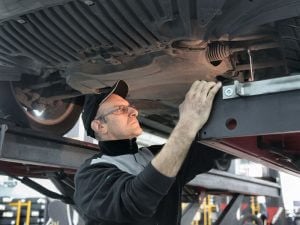



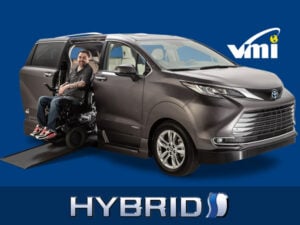



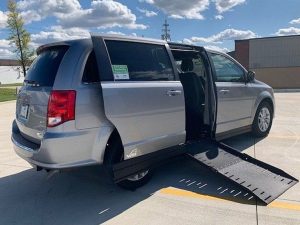


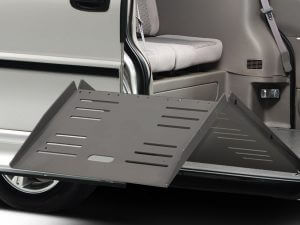
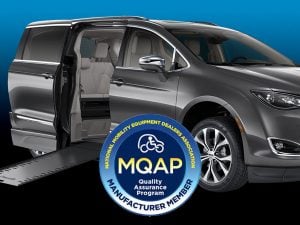





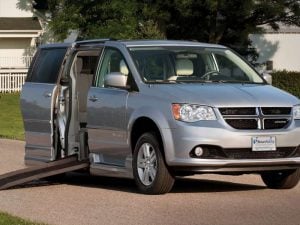
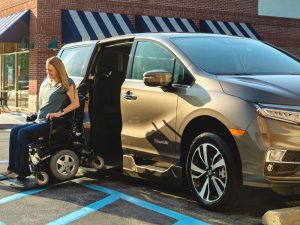

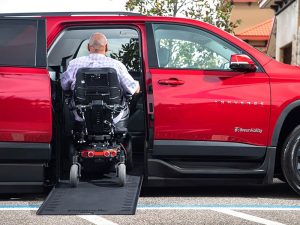
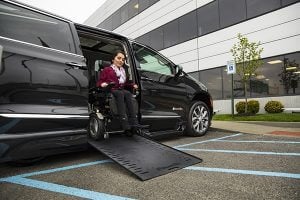







Tweet
Share https://www.themobilityresource.com/blog/post/must-try-wearable-technology-products-for-people-with-disabilities/